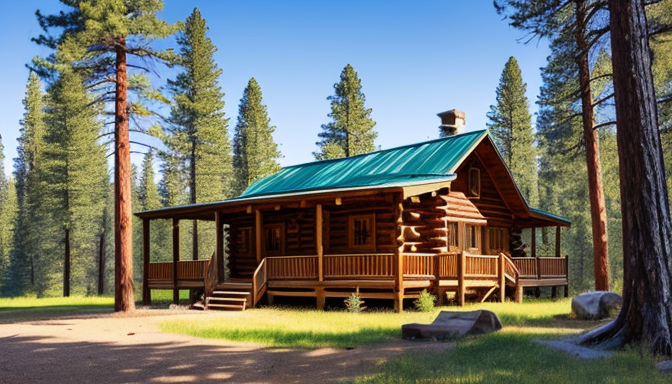When you think of the American West, what comes to mind? Dusty trails, rugged cowboys, and perhaps a showdown at high noon? These vivid images are not just the product of Hollywood magic; they are deeply rooted in literature that has shaped our understanding of the West. The genre of Westerns has evolved significantly, drawing from a rich tapestry of stories that reflect the struggles, triumphs, and complexities of frontier life.
From the early days of dime novels to the epic narratives of modern literature, Westerns have always had a profound influence on American storytelling. Authors like Owen Wister and Louis L’Amour crafted tales that captured the essence of the frontier spirit, blending adventure with moral dilemmas. These stories did more than entertain; they provided a lens through which readers could explore themes of freedom, identity, and the human condition.
As we dive deeper into this genre, we uncover how the literature of the West has not only influenced films but also shaped popular culture. The heroes and villains born from these pages have become archetypes that resonate with audiences even today. So, whether you’re a seasoned fan of Westerns or a curious newcomer, understanding the literary roots of this genre will enrich your experience and appreciation of its iconic tales.
The Evolution of Western Literature
The evolution of Western literature is like riding a wild stallion through uncharted territory—thrilling, unpredictable, and full of twists and turns. It all began in the early 19th century when authors started to capture the essence of the American frontier. These stories were not merely about cowboys and outlaws; they were reflections of a nation grappling with its identity. As settlers moved westward, they carried with them tales that would shape the very fabric of American storytelling.
Initially, Western literature drew heavily from historical accounts and folklore, blending fact with fiction. Writers like James Fenimore Cooper laid the groundwork with novels that romanticized the wilderness and its inhabitants. However, it wasn’t until the publication of Owen Wister’s “The Virginian” in 1902 that the genre truly began to crystallize. This novel introduced readers to the archetype of the rugged cowboy, a figure that would become synonymous with the American spirit.
As the genre developed, it began to incorporate elements from various cultural influences, including Native American narratives and immigrant experiences. The post-war era saw a surge in popularity for Westerns, both in literature and film, as they provided an escape from the realities of modern life. Authors like Louis L’Amour and Zane Grey became household names, their works echoing the values of bravery, honor, and adventure.
Today, the legacy of Western literature continues to influence contemporary storytelling, proving that the wild frontier is not just a place, but a state of mind. As we look back on this evolution, we see how these tales have shaped our understanding of heroism and the human condition, making the Western genre an enduring part of American culture.

Key Authors and Their Impact
When we think about the American West, it’s hard not to conjure up images of cowboys, outlaws, and vast, open landscapes. But these vivid scenes didn’t just spring from the imagination—they were carefully crafted by a handful of pioneering authors who shaped the genre. One cannot discuss the Western without mentioning the indelible mark left by writers like Owen Wister, whose novel The Virginian set the gold standard for Western literature. This book not only introduced the archetypal cowboy hero but also explored themes of honor and justice that resonated deeply with readers.
Another titan of the genre, Louis L’Amour, took the Western frontier and infused it with a sense of adventure and realism. His stories are filled with rich, detailed descriptions that transport readers to dusty trails and bustling saloons. L’Amour’s characters often grapple with moral dilemmas, making them relatable and memorable. It’s no wonder his works have been adapted into numerous films, further cementing his influence on both literature and cinema.
Moreover, the contributions of Zane Grey cannot be overlooked. His romanticized depictions of the West painted a picture of rugged individualism and the eternal struggle between good and evil. Grey’s ability to weave emotion into the fabric of his narratives captivated audiences and established the Western as a beloved genre. In fact, his works have been translated into multiple languages, proving that the allure of the American West knows no bounds.
In summary, these authors not only defined the Western genre but also shaped the broader landscape of American storytelling. Their legacies continue to influence modern narratives, reminding us that the spirit of the West is alive and well, both on the page and on the screen.
Frequently Asked Questions
- What are the origins of Western literature?
Western literature traces its roots back to the early 19th century, influenced by the romanticism of the time. It was shaped by the exploration of the American frontier, capturing the essence of adventure and the rugged individualism of its characters.
- Who are some key authors in the Western genre?
Several authors have left a significant mark on Western literature, including Louis L’Amour, Zane Grey, and Owen Wister. Their unique storytelling styles and vivid depictions of the American West helped define the genre and its enduring appeal.
- How has Western literature influenced modern storytelling?
Western literature has profoundly influenced modern storytelling by introducing archetypal characters and themes like heroism, justice, and the struggle against nature. These elements continue to resonate in contemporary films, novels, and other media.
- Are there common themes in Western literature?
Absolutely! Common themes include the conflict between civilization and the wilderness, the quest for identity, and the moral dilemmas faced by individuals. These themes explore the complexities of human nature against the backdrop of the vast American landscape.